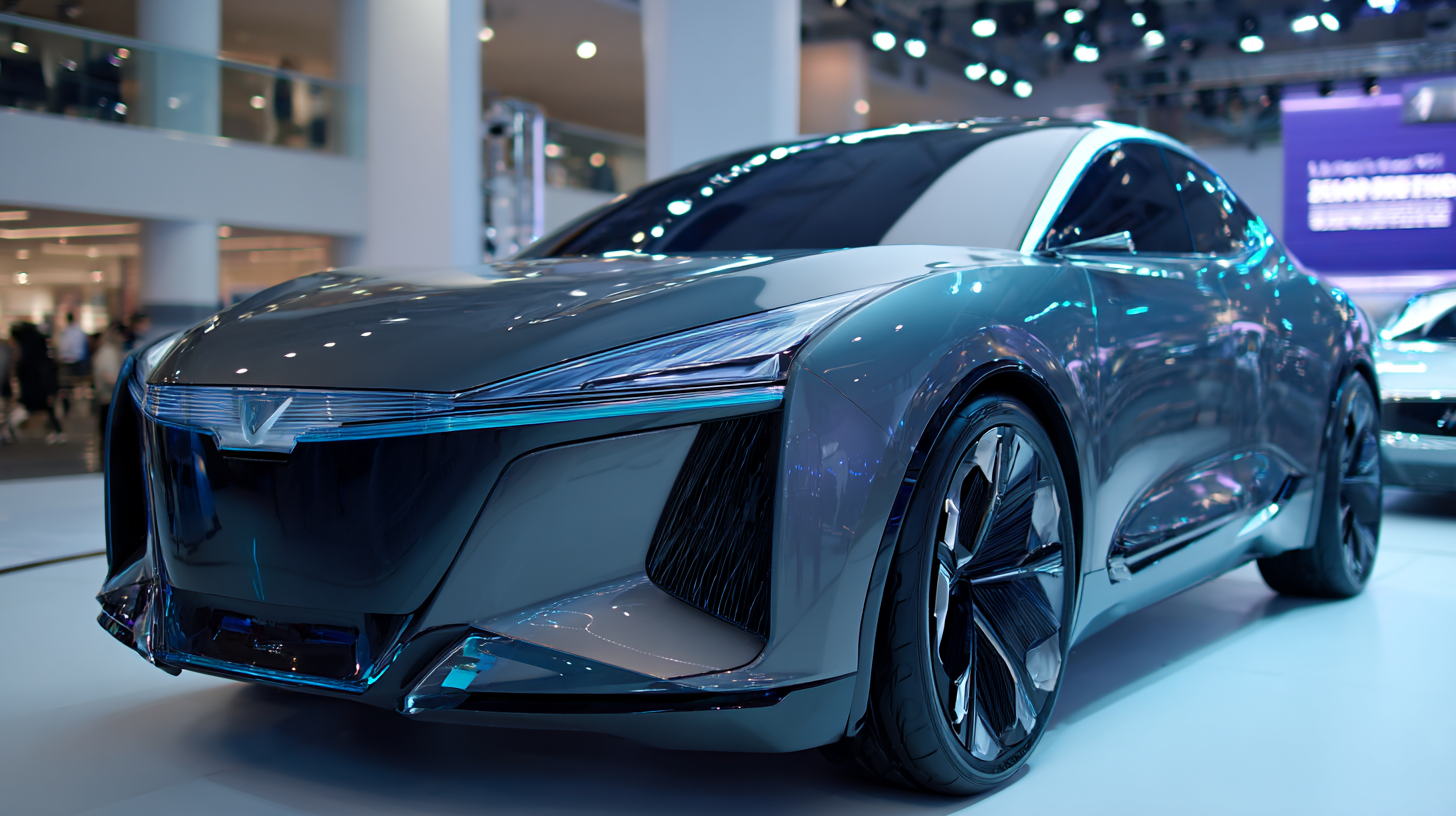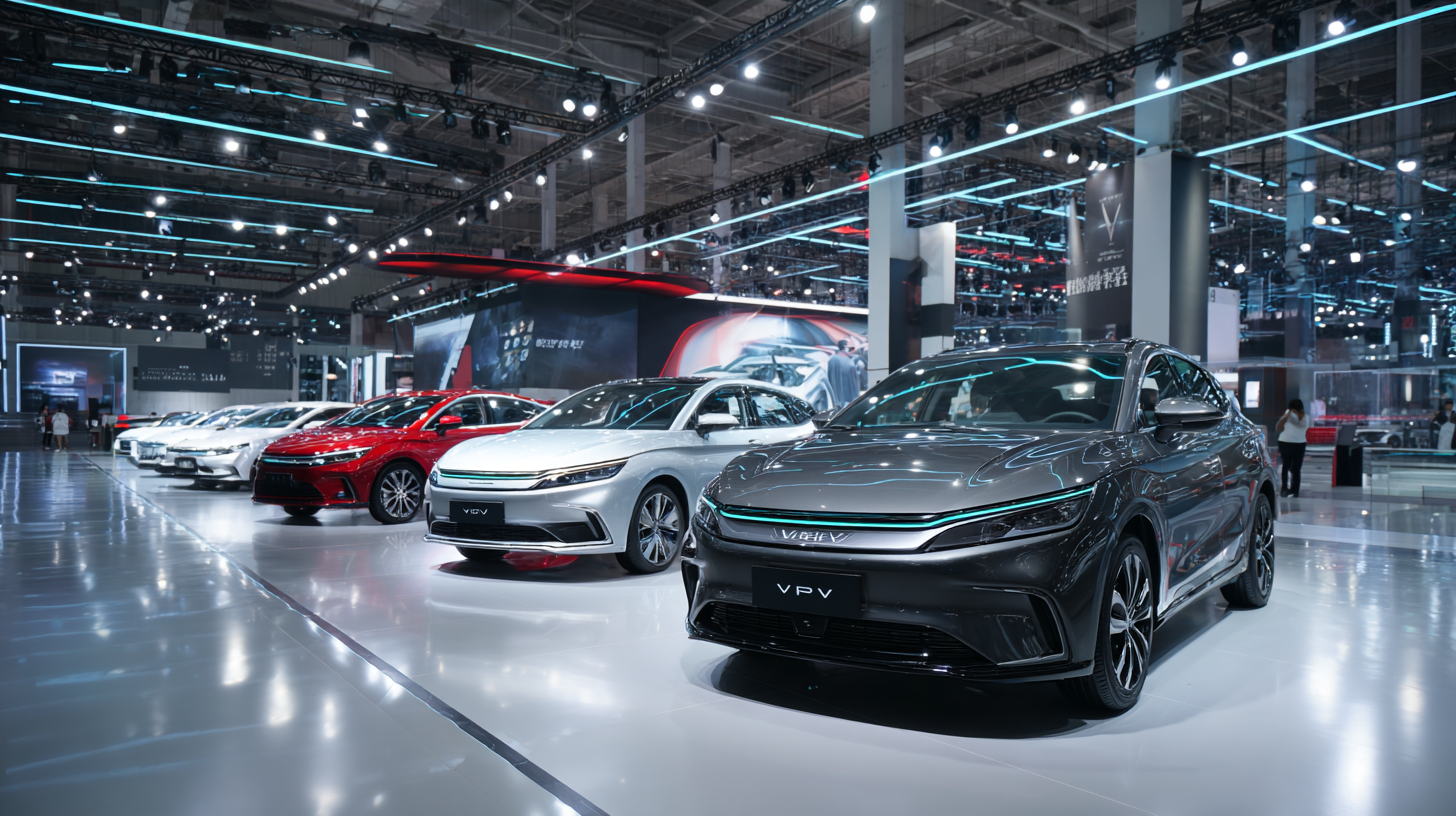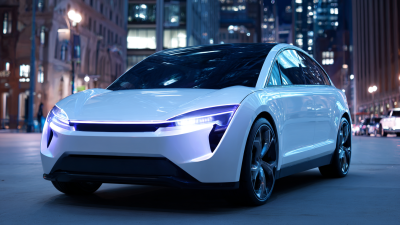As the automotive industry continues to evolve towards sustainability, the spotlight on PHEV cars (Plug-in Hybrid Electric Vehicles) has intensified, reflecting a significant shift in consumer preferences and market dynamics. According to the International Energy Agency (IEA), global sales of electric vehicles, including PHEVs, reached 10 million units in 2022, with a projected annual growth rate of 25% through 2030. This growth is highlighted at the 2025 China 138th Import and Export Fair, where innovative PHEV cars are showcased, symbolizing advancements in efficiency and reduced carbon emissions. The fair serves as a pivotal platform for manufacturers to unveil their latest technologies, as the demand for cleaner transportation solutions surges, driven by rising environmental consciousness and supportive government policies.

With China set to dominate the PHEV market, these vehicles exemplify the future of mobility, merging convenience and sustainability in a rapidly changing automotive landscape.
At the 2025 China 138th Import and Export Fair, the spotlight was on innovative Plug-in Hybrid Electric Vehicles (PHEVs) that are setting new standards in the automotive industry. With more consumers leaning towards sustainable options, PHEVs have emerged as a bridge between traditional internal combustion engines and fully electric vehicles. Recent industry reports indicate that the global PHEV market is expected to reach a valuation of $18 billion by 2027, showcasing a robust annual growth rate of over 20%. This growth is attributed to advancements in battery technology and the increasing availability of government incentives aimed at reducing carbon emissions.
Among the innovative features displayed at the fair were enhanced regenerative braking systems, smart charging solutions, and advanced driver-assistance technologies. These improvements not only boost the vehicles' efficiency but also enhance user experience with seamless connectivity and safety features. Notably, many models showcased have extended electric-only driving ranges, with some exceeding 80 kilometers, catering to urban commuters looking to minimize fuel consumption.
**Tips:** When considering a PHEV, evaluate the driving range and charging infrastructure in your area to ensure that the vehicle suits your lifestyle. Additionally, look for models that offer generous warranties on their battery systems, as battery performance is crucial for the long-term value of a PHEV. Lastly, consider the total cost of ownership, which includes fuel savings and any available government subsidies to maximize your investment.

At the 2025 China 138th Import and Export Fair, the spotlight was on innovative plug-in hybrid electric vehicles (PHEVs), which play a crucial role in advancing environmental sustainability. PHEVs combine the benefits of both electric and conventional vehicles, allowing drivers to operate in electric mode for shorter trips while maintaining the flexibility of a gasoline engine for longer journeys. This duality significantly reduces greenhouse gas emissions and reliance on fossil fuels, making PHEVs an essential component of a cleaner transportation future.
The showcasing of PHEVs at the fair highlights their potential to address key environmental challenges. With air quality deteriorating in urban areas and global efforts to combat climate change intensifying, PHEVs offer a realistic bridge towards full electrification. The technology behind these vehicles not only minimizes pollution but also supports the gradual transition of consumers towards sustainable mobility solutions. As nations and industries strive for greener practices, PHEVs stand out as a viable option to enhance energy efficiency and reduce the carbon footprint of personal transportation.
The 2025 China 138th Import and Export Fair is set to feature a range of innovative PHEV (plug-in hybrid electric vehicle) cars, highlighting the latest advancements in automotive technology. Key automotive manufacturers such as BYD, Geely, and Changan will showcase their cutting-edge models, demonstrating their commitment to sustainable transportation. This event serves as a platform for these companies to connect with global markets and exchange ideas about the future of eco-friendly vehicles.
As attendees explore the impressive lineup of PHEVs, they will have the opportunity to engage with industry experts and gain valuable insights. Tips: For those interested in the automotive sector, it’s essential to keep an eye on technological trends that emerge at such fairs. Understanding the features of new models can provide a competitive edge in both purchasing decisions and future investments.
This fair not only exhibits the latest cars but also emphasizes the importance of sustainability in automotive design. Tips: If you're planning to visit, consider attending panel discussions and workshops that focus on eco-innovation in the automotive field. Networking with industry leaders can open doors to potential collaborations and projects aligned with green technology.

At the 2025 China 138th Import and Export Fair, the spotlight was on innovative plug-in hybrid electric vehicles (PHEVs), showcasing the latest advancements in automotive technology. This event not only highlighted the growing popularity of PHEVs but also underscored the shift towards more sustainable transportation solutions. The new PHEV technology promises enhanced efficiency, reduced emissions, and a seamless transition between electric and hybrid modes, appealing to environmentally conscious consumers.
Industry experts pointed out that these innovations reflect a broader trend within the automotive sector, where manufacturers are increasingly investing in green technologies. The integration of advanced battery systems and improved electric drives in PHEVs demonstrates a commitment to reducing carbon footprints while maintaining performance. As the automotive landscape evolves, the focus on PHEVs at international fairs emphasizes the industry's drive towards sustainability and adaptability, setting a benchmark for the future of eco-friendly vehicles.
| Model | Battery Capacity (kWh) | Electric Range (km) | Fuel Efficiency (L/100km) | Charging Time (hrs) |
|---|---|---|---|---|
| Model A | 18 | 60 | 5.0 | 4 |
| Model B | 20 | 80 | 4.5 | 3.5 |
| Model C | 24 | 100 | 4.0 | 2.5 |
| Model D | 22 | 75 | 4.8 | 3.0 |
| Model E | 19 | 65 | 4.7 | 3.8 |
At the 2025 China 138th Import and Export Fair, the spotlight was firmly placed on innovative plug-in hybrid electric vehicles (PHEVs) that promise to revolutionize electric mobility. With the automotive industry pivoting toward sustainability, these vehicles showcased cutting-edge technologies and design philosophies aimed at reducing carbon footprints. Various manufacturers presented their latest models, emphasizing not only their efficiency but also their advanced connectivity features that integrate seamlessly with smart city infrastructure.
The fair served as a melting pot for industry trends, highlighting the growing importance of electric mobility in urban planning and environmental policy. Experts at the event discussed the challenges and opportunities associated with widespread PHEV adoption, particularly in terms of battery technology improvements and charging infrastructure enhancements. The insights gathered from this gathering indicate a robust future for electric vehicles, driven by innovations that cater to both consumer demands and global sustainability goals. The integration of automotive advancements with renewable energy sources and smart technologies promises to pave the way for a more sustainable and efficient transportation landscape.
This chart illustrates the projected sales growth of Plug-in Hybrid Electric Vehicles (PHEVs) from 2020 to 2025, showcasing the increasing adoption of innovative electric mobility solutions.






